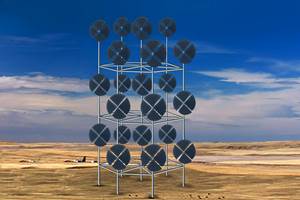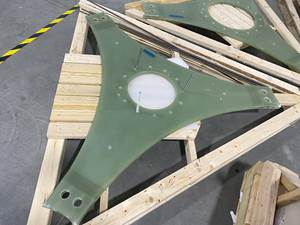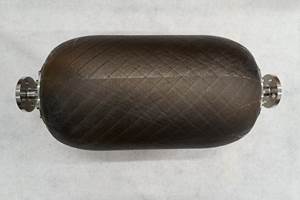JEC Composites 2006 Sampe Europe preview
JEC expands its Paris Expo exhibit space as SAMPE Europe settles in to new conference facilities at nearby Hotel Mercure.
The JEC Composites Show 2006, to be held from March 28 to 30, is expanding its footprint at the Paris Expo, in Porte de Versailles, Paris, France by 1,000m2 (10,764 ft2) to accommodate even more exhibitors this year. Last year, JEC boosted floor space by 20 percent, and reportedly drew 900 exhibiting companies and more than 25,000 visitors. Show organizers are betting this year's show will exceed those marks. (Note: JEC's exhibit floor expansion necessitated rearrangement of stands on the Paris Expo show floor. JEC officials were not able to finalize stand reconfiguration and make stand assignments for confirmed exhibitors before this issue went to press. Therefore, CT was not able to publish, as it has in previous years, a map of the show floor and an exhibitor list.)
To make room for the greater number of, and in some cases larger, stands, organizers have moved all of the six JEC Forums in the adjacent "Espace 2000" area of Paris Expo. The Forums will explore topics in the areas of Aerospace, Automotive, Building and Construction, Mass Transport-ation, Marine and Natural Fibers. Blue-ribbon panels comprised of manufacturers, research experts, designers and engineers will present case studies that are expected to generate significant interest. For instance, ATR Engineering, whose innovative sports car chassis design is profiled in this issue's "Engineering Insights" feature, on p. 44, will present a paper at JEC's Automotive Forum.
SAMPE EUROPE CHANGES VENUES
For 2006, the SAMPE Europe conference has moved to the Hotel Mercure (36 rue du Moulin), just a short walk from Paris Expo (shuttle buses also will be available). The conference also will begin a day earlier than the JEC event and run from March 27 through 29. According to SAMPE Europe's conference organizers, the changes are intended to provide SAMPE members a more hospitable setting in which to attend technical paper presentations, while the offset dates give attendees a full day to visit JEC's exhibition after the conference concludes. SAMPE's program will focus on the latest in applied composites technologies, with sessions on liquid molding, thermoplastics and nanotechnology, among others. A post-conference session on carbon fiber supply challenges also is on the docket.
JEC SPOTLIGHTS INNOVATION
In keeping with its theme "Composites for Better Living," JEC's show will feature the gamut of composites applications, from bicycles to satellites to wind turbines and more. To enable communication between such a diverse group of exhibitors and visitors, JEC will continue several previously well-received programs and will add a new one. On the show floor, JEC again will provide a Demo Zone, where exhibiting companies can present live demonstrations of processes and technology. New exhibitors targeted to space, telecommunications, construction and industrial applications will be grouped together in a new "Expo Platform." Other special-interest areas will include the SME's Discovery, Education and Skills Villages; the Process and NICT Villages; the Design Agora; and the Innovation Showcase exhibit.
The latter will showcase winners and finalists in this year's JEC Composites Innovation Awards Program. The award competition, an annual event since 1998, will honor accomplishments in its broadest range of categories yet: Aeronautics & Space, Construction, Ground Transport, Energy & Industry, Sports & Leisure and two new categories, Environment and Process.
A jury of international experts, including representatives from supplier companies as well as journalists, university professors, JEC's general manager Frédérique Mutel and JEC Magazine's editor-in-chief Frédéric Reux, will select what they believe are the most innovative composite processes, applications and products, based on technical interest, market potential and collaborative success of project partners.
In the Aeronautics & Space category, Huntsman Advanced Materials (Switzerland), the University of Sheffield (U.K.) and Rolls Royce (U.K.) are finalists for a project that involves filling hollow jet engine compressor fan blades with a vibration-damping composite material. The filled blade was put on the market in 2005, and will fly on the Airbus A380 aircraft. New-generation jet engines are expected to gain from the innovation. Other finalists include a carbon/epoxy UAV aircraft built by a French prototyping firm, and a consortium headed by Stanford University, which is investigating thin reinforcement ply layups for aerospace applications that produce laminates said to be cost-competitive with comparable metal structures.
In the Ground Transport category, Jupiter Plast (Denmark) and Siemens Mass Transportation (Germany) are in contention, with the front end of the Avanto Tram-train model, an impact-resistant composite structure that is the first composite to comply with the requirements of the DIN 5560 crash standard. The vacuum-infused sandwich construction combines a Rohacell (Degussa Rohm GmbH) foam core with a fire-resistant methacrylic resin. The nose, which can withstand a 30-ton frontal impact, bends in a controlled way that leaves the conductor protected and does not deform the coach. The first parts for the Avanto Tram-train will be delivered in 2006. Other finalists include the IMTS bus — made entirely in carbon fiber for its exceptional stiffness, fire resistance (exterior flame) and heat insulation compared to a metal structure — and a tank for bulk powder products, made using filament winding and resin transfer molding (RTM) techniques, using vinyl ester and polyester resin and carbon and glass woven or mat reinforcements.
In the new Process category, automakers Ford Motor Co. (U.S.) and Aston Martin (U.K.) and molder Sotira (France) used a robotic preforming process for a Class A application on the Aston Martin DB9. The robotized F3P Ford Programmable Preforming Process is used to produce the performs, which are then molded via an RTM process to obtain Class A parts directly. Sotira currently produces about 15,000 parts per year and plans to reach 34,000 parts annually. Also under consideration is an industrial liquid resin infusion (LRI) machine, with an emphasis on automation, precise control of parameters (notably for temperature), and healthy working conditions (the resin circulates in a closed loop). A third group has a filament winding machine based on the use of an industrial robot to produce small- and medium-sized parts.
In Energy/Industry, Thibaut (France), Design & Co. (France) and Ouest Composites (France) have introduced T 818 Access, the first in a new line of equipment made from composites, for machining and polishing stone and other hard materials. Mikkeli (Finland), Tehomet (Finland) and Fibrocom (Finland) also are in the running with a lighting pole designed with controlled energy-absorption characteristics that make vehicle impacts less dangerous; and a final group is offering SMC parts for the power supplies of variable-speed equipment.
Competitors in the Environment category include Saint-Gobain Vetrotex (Brazil) and RGF Projetos (Brazil), offering composite power pole top equipment made with 58 percent recycled polypropylene mixed with 40 percent SFC-100 25-mm/1-inch glass fiber and 2 percent additives to improve stability and weatherability. RS Technologies (Canada), Dow Chemical (Canada), Fiber Glass Industries (U.S.), and JNE Welding Ltd. (U.K.) are also finalists, on the strength of their filament-wound transmission tower of glass fiber-reinforced polyurethane resin.
Sports & Leisure finalists include 2 win (France), Fritsch & Associés (France), Plastic Processing Alternatives PPA (France) and Saint-Gobain Vetrotex (France), a team that developed Twincat, a 4.6m/15 ft mass-produced sports catamaran made of Twintex glass fiber-reinforced thermoplastic. The first prototypes were displayed at the Paris Boat Show in December 2005, and production will start in 2006. Schappe Techniques (France), Thermofusion GmbH (Germany) and Carbonfunctions Vertriebs GmbH (Germany) have entered the Mantis HE, an electric golf caddy with a tube structure made of trademarked TPFL carbon-fiber-reinforced thermoplastic. Finally, partners KKG Katamaran Konstrucktions GmbH (Austria) and High Modulus England (U.K.) have entered the Nano Speed Needle, a power catamaran with a uniquely aerodynamic/hydrodynamic composite design.
Construction finalists include a group from The Netherlands: Holland Composites Industrials BV and partners Solico BV and Octatube International BV constructed the roof of Tel Aviv's Yitzak Rabin Center, in Israel, using glass/polyester composite with foam core. Each segment was vacuum-infused over CNC-machined blocks of polystyrene. Other finalists include a 2D- and 3D-bendable beam with glass/carbon composite bracing, designed for use with prefab zinc and copper roofs; and CR (composite reinforcement) frames, designed to replace steel as reinforcement in concrete structures.
For more information about the JEC Composites Show, visit the Web site: www.jeccomposites.com. More information on the SAMPE Europe conference, visit the Web site: www.sampe-europe.org.
Related Content
Drag-based wind turbine design for higher energy capture
Claiming significantly higher power generation capacity than traditional blades, Xenecore aims to scale up its current monocoque, fan-shaped wind blades, made via compression molded carbon fiber/epoxy with I-beam ribs and microsphere structural foam.
Read MoreRTM, dry braided fabric enable faster, cost-effective manufacture for hydrokinetic turbine components
Switching from prepreg to RTM led to significant time and cost savings for the manufacture of fiberglass struts and complex carbon fiber composite foils that power ORPC’s RivGen systems.
Read MoreRecycling end-of-life composite parts: New methods, markets
From infrastructure solutions to consumer products, Polish recycler Anmet and Netherlands-based researchers are developing new methods for repurposing wind turbine blades and other composite parts.
Read MoreNCC reaches milestone in composite cryogenic hydrogen program
The National Composites Centre is testing composite cryogenic storage tank demonstrators with increasing complexity, to support U.K. transition to the hydrogen economy.
Read MoreRead Next
“Structured air” TPS safeguards composite structures
Powered by an 85% air/15% pure polyimide aerogel, Blueshift’s novel material system protects structures during transient thermal events from -200°C to beyond 2400°C for rockets, battery boxes and more.
Read MoreVIDEO: High-volume processing for fiberglass components
Cannon Ergos, a company specializing in high-ton presses and equipment for composites fabrication and plastics processing, displayed automotive and industrial components at CAMX 2024.
Read MoreAll-recycled, needle-punched nonwoven CFRP slashes carbon footprint of Formula 2 seat
Dallara and Tenowo collaborate to produce a race-ready Formula 2 seat using recycled carbon fiber, reducing CO2 emissions by 97.5% compared to virgin materials.
Read More





















